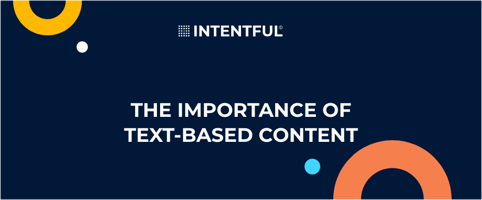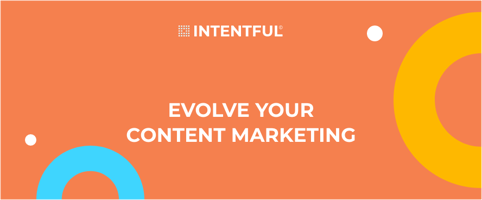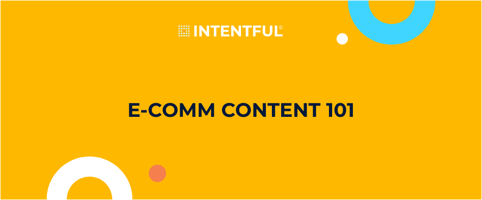The digital space has become oversaturated with content, making it ever more difficult for brands...
How to Build a Content Calendar for Your Brand
In today's competitive digital landscape, having a content calendar is more important than ever. It serves as a roadmap for your content marketing efforts, helping you plan, organize, and execute them effectively. It ensures that your brand consistently produces high-quality texts, videos, and podcasts that align with your goals, engage your target audience, and drive results.
A well-structured calendar can help you:
- Plan ahead and, consequently, allocate resources more efficiently, avoid last-minute scrambling, and ensure that you always have something new and interesting to share with people.
- Organize your content by type, format, and theme, making it easier to track your efforts and ensure that you're covering all relevant topics and formats.
- Maintain consistency in the publishing schedule, ensuring that your demographic receives a steady stream of high-value material.
- Align your texts, videos, etc., with your brand's overall goals and objectives, such as increasing brand awareness, generating leads, or driving website traffic.
- Keep your team aligned by having certainty in regard to what they should create and publish. It makes it easy for them to collaborate, share ideas, and stay on the same page.
So, let’s dive into the indispensable aspects of creating content calendars.
Determine Your Goals and Objectives
It’s a pretty simple rule that one’s actions must be a means to an end. That’s why creating a calendar should also be a way to achieve goals, and businesses must know which.
- Increasing brand awareness and visibility
- Generating leads and conversions
- Driving website traffic
- Boosting customer engagement and loyalty
- Establishing thought leadership and authority in your niche
- Educating your audience about your products or services
- Strengthening relationships with existing customers
Being SMART
When determining goals, it's important to make them specific, measurable, achievable, relevant, and time-bound — in short, SMART. Here is a smart description of them.
- A specific goal is clearly defined and answers the questions: who, what, where, when, and why. Example: Instead of saying, "I want to increase my blog's traffic," say, "I want to increase my blog's unique monthly visitors by 15% within the next 6 months by focusing on SEO and social media promotion." Nothing is vague here.
- A measurable goal has a quantifiable outcome, so you can easily track your progress. For instance, if you want to grow your email list, a correct formulation would look like this: "I aim to add 500 new subscribers to my email list within the next 3 months."
- An achievable objective is realistic and attainable, considering your resources, constraints, and other factors. For example, if you're a small business owner, it might be, "I want to increase my revenue by 10% in the next quarter by introducing a new product line and improving customer service." How to determine what is realistic and what is pure daydreaming is another question.
- A relevant goal aligns with your broader objectives and long-term vision. For instance, for a fitness blogger, relevance can look like this, "I want to create and publish 12 high-quality workout videos on my YouTube channel within the next 6 months to expand my audience and promote my brand."
- A time-bound objective has a clear deadline, which helps you stay focused and motivated. Example: If you're planning to launch a podcast, a time-bound goal would be "I will launch my podcast, with the first 4 episodes published, by the end of the next 2 months."
Know Your Audience
By truly understanding your audience, you can create texts, videos, and podcasts that speak directly to their needs, pain points, and interests. This, in turn, contributes to relevance, personalization, and connection.
Here are some tips on how to get to know your target segment better:
- Use analytics tools to gather data on your audience's demographics, interests, behaviors, and preferences.
- Talk to your customers to collect feedback on people’s needs, pain points, etc.
- Monitor social media to understand consumers’ thoughts, opinions, and reactions to your brand.
- Develop buyer personas that represent your target customers based on real data and insights.
Once you understand who your customers are, do the following:
- Address their pain points by offering them information that solves their problems, answers their questions, and provides solutions.
- Use storytelling to make your texts and videos more relatable and memorable, connecting with people on an emotional level.
- Provide value via education, entertainment, or inspiration.
- Use visuals such as images, videos, and infographics for increased engagement and shareability.
Determine Your Content Types and Formats
Having set SMART goals and researched your audience, determine your content types and formats. Take into account that several types are needed to ensure proper reach and high efficiency.
The main types, each branching into subtypes, are as follows:
- Blog posts provide education, information, or entertainment.
- Videos can be shared across social media platforms and websites, ranging from product demos to behind-the-scenes footage.
- Infographics include visual representations of data, statistics, or complex information that are easy to understand and share.
- Social media posts encourage social media sharing and engagement.
- Podcasts can be consumed on the go, providing consumers with valuable information or entertainment.
- Webinars inform and educate consumers and encourage engagement.
- Consider your brand's voice and ensure that all of your content types align with it, creating a cohesive experience for your audience.
- Create detailed style guides and prescribe everything up to color schemes, fonts, and formatting.
- Use templates to ensure consistency in design and formatting.
Choose Your Channels and Platforms
Each channel has its own unique audience, features, and requirements, so it's important to research and choose the ones that align with your brand's goals.
Here are some tips on how to choose:
- Identify who your ideal customer is and where they spend their time online.
- Research where your competitors are publishing their texts, videos, and podcast and which channels and platforms are generating the most engagement for them.
- Consider what works best for different channels. For example, videos perform well on YouTube and Instagram, while long articles may be better suited for a blog or LinkedIn.
- Experiment and track results: Don't be afraid to try out different channels to see what works best for your brand. Use analytics to track engagement and adjust your strategy accordingly.
Once you've chosen your channels, it's important to carry out optimization. This may include resizing images or videos, adjusting the tone and formatting of texts, or using specific hashtags and keywords.
Create Your Content Calendar
Now that all preparations have been done, create a calendar template to plan and schedule your texts, videos, and podcasts. The template should include the topic, content type, channel, publication date, and any other relevant details.
Fill it according to the tips provided above. Also, following these rules is a good idea:
- Don't overcomplicate the calendar with too many details. Keep it easy to read and update.
- Use color coding to differentiate between content types or channels.
- Set reminders for creation and publication deadlines for each piece.
- Review and adjust the calendar regularly to ensure it's still aligned with your goals and adjust as needed.
Collaborating with your team and stakeholders, assign responsibilities correctly based on people’s expertise and availability, use a collaborative tool such as Google Sheets or Trello, and have regular meetings to discuss progress and make any necessary adjustments to the calendar.
Creating a calendar is an essential step in creating or boosting a company’s online presence. Try doing that today and see the difference it can make for your brand.
And if you need help creating a content calendar (or any other kind of text), Intentful's generative AI can assist you in the process.
At Intentful, we offer top-notch artificial intelligence content at scale at a fraction of the cost. Businesses can order texts turnkey or opt for a dedicated AI instance tailored to suit their needs.
Intentful also offers ChatGPT plugins, which are advanced conversational chatbots that actually converse with people, as opposed to traditional bots relying on scripts. The plugins, trained with information about your brand, can help your customers find the information that can’t even be googled.
We hope this blog post has been helpful. Don’t hesitate to contact us today if you have questions or want to book a workshop.


